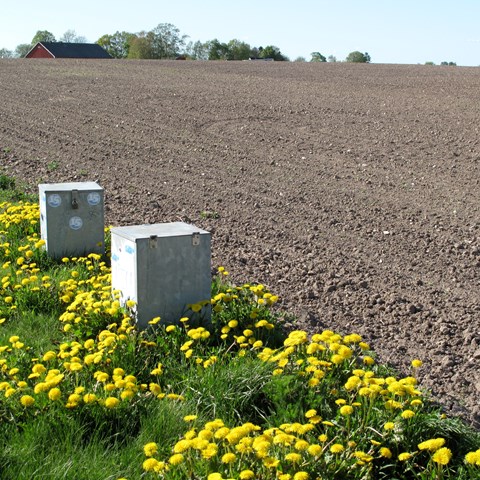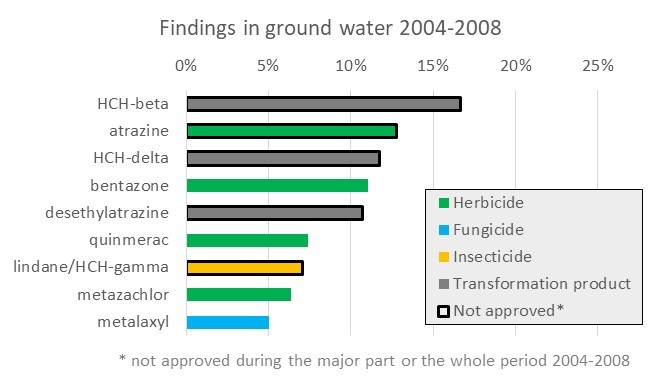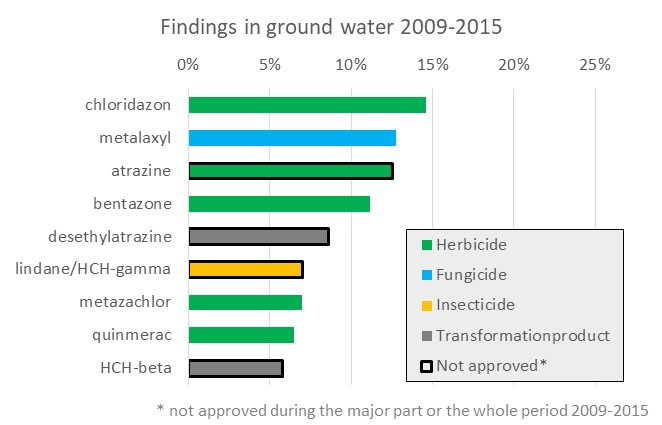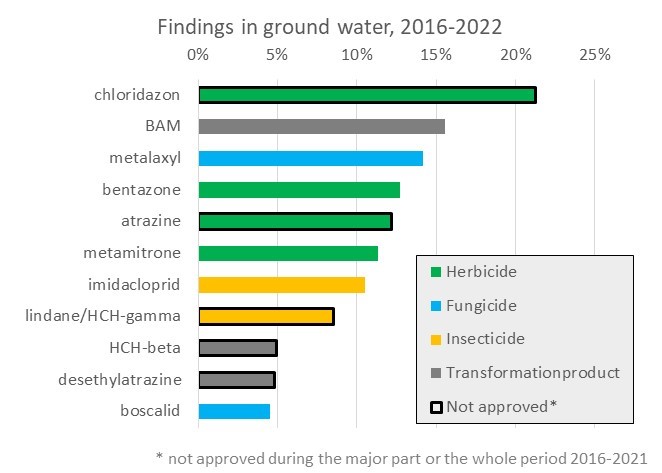Contact
Department of Aquatic Sciences and Assessment, Division of Environmental Organic Chemistry and Ecotoxicology

Data and results from the sampling of ground water and sediments, within the national environmental monitoring program of pesticides, are found here. Ground water is collected at four sites, four times a year, in each of the four model catchments. Sediments are collected once a year at six sites: in the streams draining the four model catchment as well as in the two rivers in the county of Skåne (Scania).
Read more about the Swedish environmental monitoring program of pesticides.
None of the samples collected during 2004-2021 have had a total concentration higher than 0,5 µg/l, which is considered as high impact of pesticides on groundwater according to Geological Survey of Sweden (SGU). At 16 occasions, of which 11 was before 2009, single substances have had a concentration above 0,1 µg/l, which is the limit for individual substances.



Figures showing substances found in more than 5% of the samples, during three periods.
Pesticide findings in groundwater of the four model catchments are shown in the figures, divided into three time periods. Atrazine and lindane were banned several years before the measurements began in 2004 but have been found regularly, together with their transformation products desethyl atrazine and HCH-beta, respectively, throughout the monitored period. The majority of these finds have been made in the groundwater of Scania (Skåne) model catchment.
Chloridazon has been analysed since groundwater sampling began in 2004, but with only one finding 2004-2008. Findings increased when the detection limit was decreased in 2009 (from 0.02 to 0.002 µg/L). Chloridazon together with bentazone, metamitrone and metazachlor are mainly found in the model catchment of Scania.
Findings of the transformation product BAM, from the substance diclobenil (banned since the 1990’s) as well as the substance fluopicolide (approved since 2012), has increased. In addition to BAM, imidacloprid and metalaxyl are mainly found in the model catchment of Halland. Imidacloprid was banned for use in field crops in 2019 but is still approved as a biocide in, for example, animal stables and in ant repellent boxes.
Quinmerak has mainly been found in the model catchment of Västra Götaland.
There has been very few findings of pesticides in the model catchment of Östergötland.
Model catchments:
Rivers: